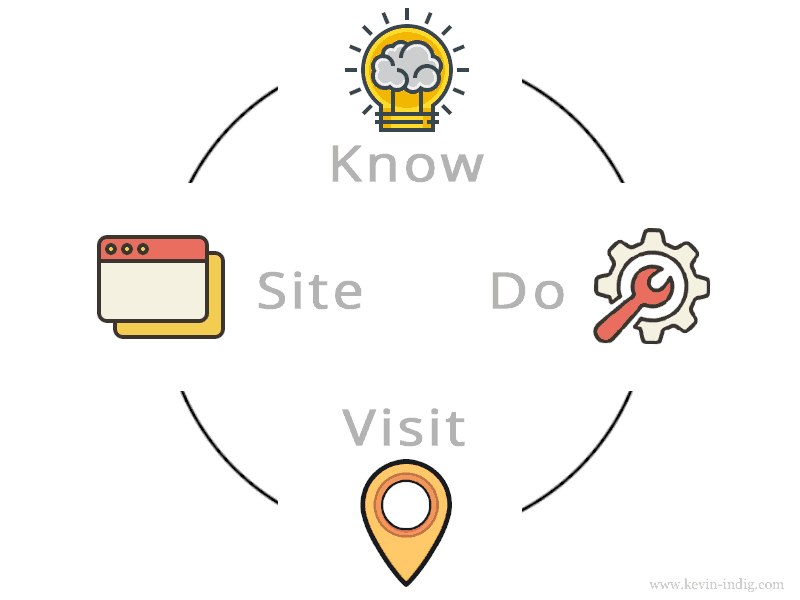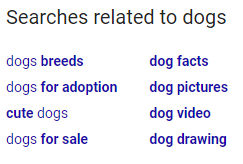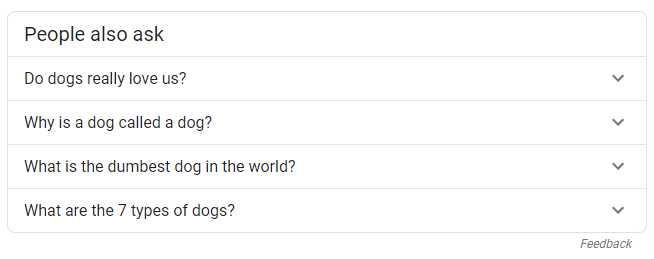Google’s main objective in any search is simple – To satisfy the user’s intent the best way it knows how in the least amount of time possible. So what are user intents and how does understanding the concept of user intent help with SEO?
What is a user intent?
Let’s start with the definition of what a user intent is. A user intent is simply the goal of a user when making a search on a search engine. So a user searching for “What Do Dogs Eat” obviously has the intent of figuring out what kinds of things dogs like to eat. In this case this query would be considered a Know Simple query. So what are the different types of queries? Well according to Google there are 4 types of queries and they are as follows.
- Know, some of them being Know Simple
- Do, some of which are device Action
- Website
- Visit In Person

Know Query
A know query is any query with the intent of finding out information and facts about a subject. If an Intent can be satisfied with just a few sentences or a paragraph or two, we can further categorize the query into a Know Simple Query which is a subcategory of the Know Query. An example of a know query might be a general query like “Georgia Tech” where the main intent is simply to find information on Georgia Tech, while a query like “How much does an average alligator weigh” would be considered a know simple query.
Tips To Rank For Know Queries
So let’s say you are creating a web page and it is a guide on how to tie a tie. We know users will probably be searching for “how to tie a tie”, “tying a tie tutorial”, etc. All of these would be know queries and can probably fit the simple know query definition. Again Google’s goal is trying to satisfy the user’s intent in the quickest way possible, which brings us to the first tip.
Answer Know Simple Queries At The Top Of The Page
To rank for know simple queries it is best to satisfy the user’s intent in the quickest way possible. In the case of tying a tie, you could list the steps at the very top of the page to ensure the user’s intent is satisfied as quickly as possible. If the query is not a know simple query but instead a general know query, make sure you are satisfying the user intent throughout the entire web page.
Let Google Know You Are Satisfying The User Intent
Format your content so it is obvious that you are satisfying the user intent. If you are trying to rank for “how to” queries for example, put a heading tag of the how to question at the top of the page. Below it, you can put the steps in a list element. Tables and lists are a very easy way to format data that make it easy for a search engine to understand your content, and therefore understand that you are satisfying the user intent. Also use headers so that the search engine spider understands that the content coming after the header is directly talking about the header.
For General Know Queries, Hit All User Intents
If you are targeting a general keyword be sure to hit all user intents to increase your odds of ranking. What if you want to rank for a very general query such as “dogs”? What might the user intent be? Well there are many possible user intents and Google will choose the pages that hit many different user intents. So how do you figure out what all of the user intents are for this know query. Well there are many ways. One way is to check google trends and search under the related keywords box to see what kinds of things people are searching for when searching for dogs. We can see one intent is to find dogs for sale. Another thing we can do is perform the search and find the following types of blocks right in the search results. We see people are interested in general facts, breeds, adoptions, pictures, videos, and dog adoptions to name a few. So to rank for dogs we may want to touch on all of these intents, with the most common intents on the top.


Do Query
Do queries are queries where the user intent is to simply do something. Perhaps the user wants to buy a movie ticket, download a program, or interact with a website or app. Ranking for these depends on what the user want.
Purchase Intent Example – If the user wants to make a purchase, a good page to rank may be an order page, with images of the product, a list of reviews, links to customer service (for authoritativeness), and in depth information on the product. Product pages are typically considered YMYL (Your Money Your Life), so making sure you have enough information on the company and having a positive reputation online are key.
Device Action queries are a special kind of do queries. The user wants to perform some kind of action on their device such as sending a text, schedule a meeting, etc.
Website Query
A website query is simply when a user is specifically wanting to go to a specific website. Website queries include “Youtube”, “youtube.com”, “cat videos youtube”. In each of these examples it is quite clear the user wants to go to the YouTube website. To rank for these are usually very easy. Just be sure your pages are titled, you content relates to the title of your web pages, and the content is directly related to your title. Obviously making sure your content is indexed is also a very important factor. If you follow these steps you should have no problem ranking for these types of queries.
VIP Query
A VIP query has a visit in person intent where the user simply wants to go somewhere. Examples of these queries include “Fast Food Near Me”, “Closest Walmart”, or “Nearest Toy Store”. These queries tend to pull up a VIP Special Content Result Block as displayed below.

Typically ranking in these boxes involves signing up for Google Business and listing your business type and address although its a good idea to include local business schema on your home page.
